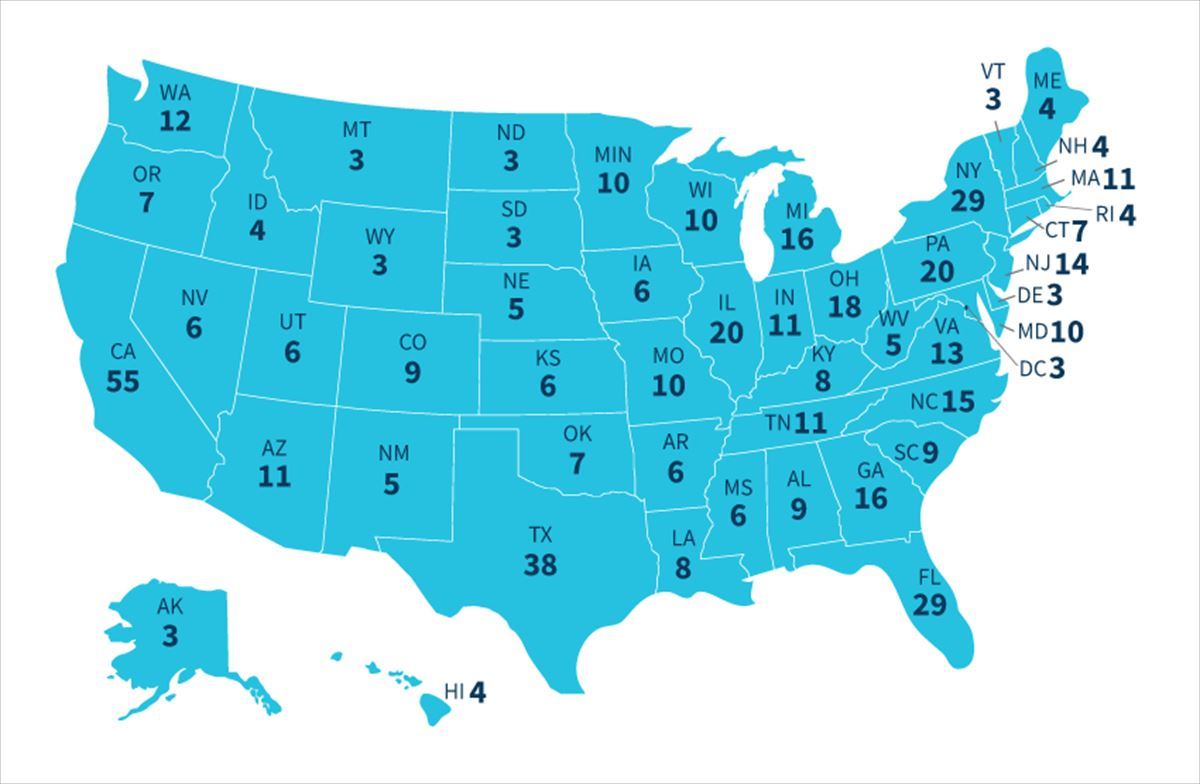Five presidents in United States history were not the most voted in the polls. The last one was precisely Donald Trump.
It seems hard to believe, but yes: The person with the most votes does not always win in elections in the United States. This phenomenon, which commonly occurs in parliamentary democracies such as Spain, has also occasionally repeated itself in a democracy as presidential as the United States.
And why does it happen? Because in the same way that in Euskadi the Lehendakari is elected by the Basque Parliament, and in Spain the President of the Government is elected by the Congress of Deputies, in the US the elections are governed by a body called Electoral College. No, not the House of Representatives (the United States Congress).
Explained differently: In reality, voters do not directly elect the nation’s president in elections, but delegate that function to 538 delegates or electors who will vote on their behalf in the nation’s 50 states and the District of Columbia (headquarters of the capital ).
The Electoral College, which also chooses the vice president, It was founded in 1787 by the ‘founding fathers’ (as the authors of the Constitution in that country like to be called), after they had excluded direct elections by popular vote to protect small states from the power of the large ones.
The number of electors in each state is equal to the number of senators plus the number of representatives. So, The total number of delegates is 538equal to the congressmen of the House of Representatives (435), the legislators of the Senate (100) plus the three delegates contributed by the District of Columbia.
Therefore the winner requires a majority of 270 votes in this body to win the presidential election.
Of the states with the most electoral votes, California (55), Texas (38), Florida and New York (29), Pennsylvania and Illinois (20) and Ohio (18) stand out.
With this system (known as the winner takes all“winner takes all”) the candidate who wins in a state, regardless of whether it is one vote difference or a millionkeeps all its representatives on the Electoral College. For example, if one of the candidates wins in California, the 55 California representatives of the Electoral College are for him.

Five precedents
As a general rule, the winner of the electoral vote has historically tended to coincide with the winner of the popular vote, although five presidents have been elected after losing the popular vote count:
– In 1824, John Quincy Adams He received about 38,000 fewer votes than Andrew Jackson, but ultimately won the White House.
– In 1876, Rutherford B. Hayes He won the Electoral College by one vote, despite being defeated by Samuel T. Tilden by some 264,000 popular votes.
– In 1888, Benjamin Harrison He won the Electoral College by 65 votes, although he lost to Grover Cleveland at the ballot box.
– In 2000, George W Bush He lost the popular vote to Al Gore by 0.51%, although he ultimately won with 271 electoral votes, compared to his opponent’s 266.
– In 2016, Donald Trump He received 3 million fewer votes than Hillary Clinton, despite winning 304 to 227.
If no candidate receives a majority of electoral votes, the decision to elect the president now goes to the House of Representatives, where each state delegation has one vote. The same process applies to the selection of the vice president in that situation, but the selection is made by the Senate.
Only two presidents have been elected by the House of Representatives:
– In 1801, Thomas Jefferson He defeated Aaron Burr after 36 consecutive votes.
– In 1825, John Quincy Adams He defeated Andrew Jackson on the first ballot.
Source: EITB
I’m Wayne Wickman, a professional journalist and author for Today Times Live. My specialty is covering global news and current events, offering readers a unique perspective on the world’s most pressing issues. I’m passionate about storytelling and helping people stay informed on the goings-on of our planet.



